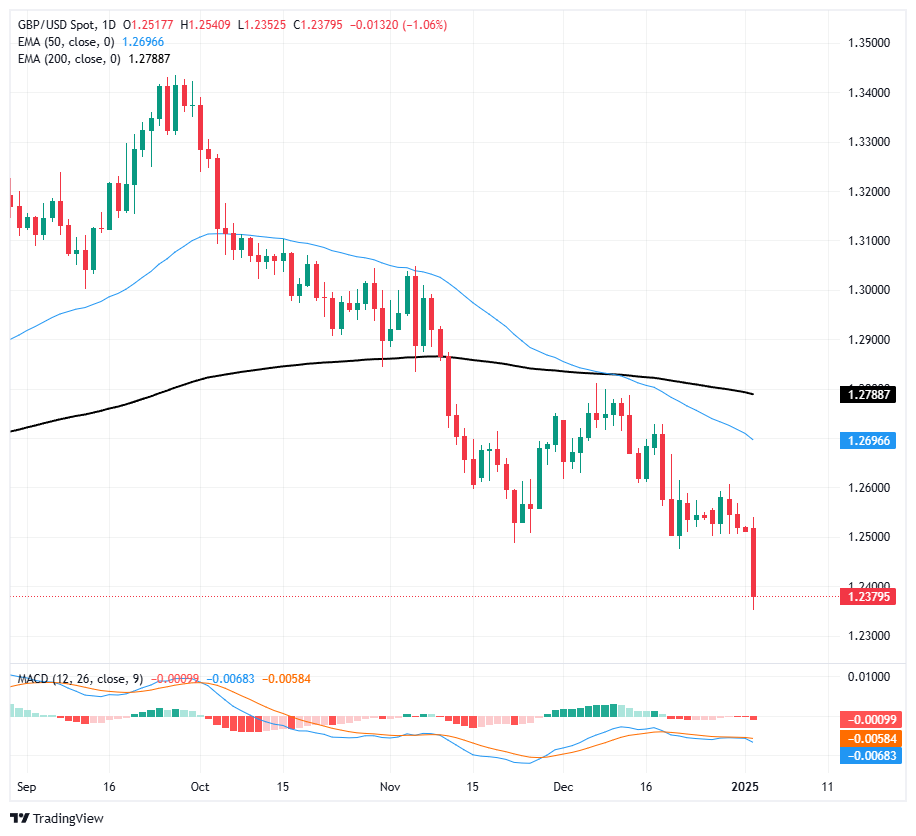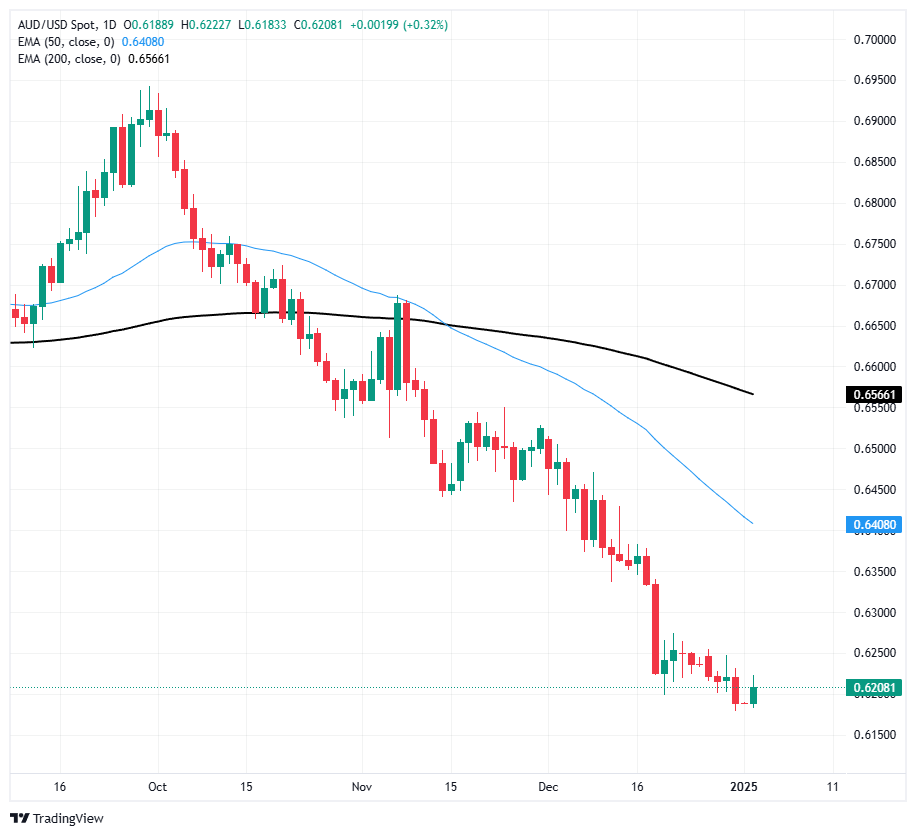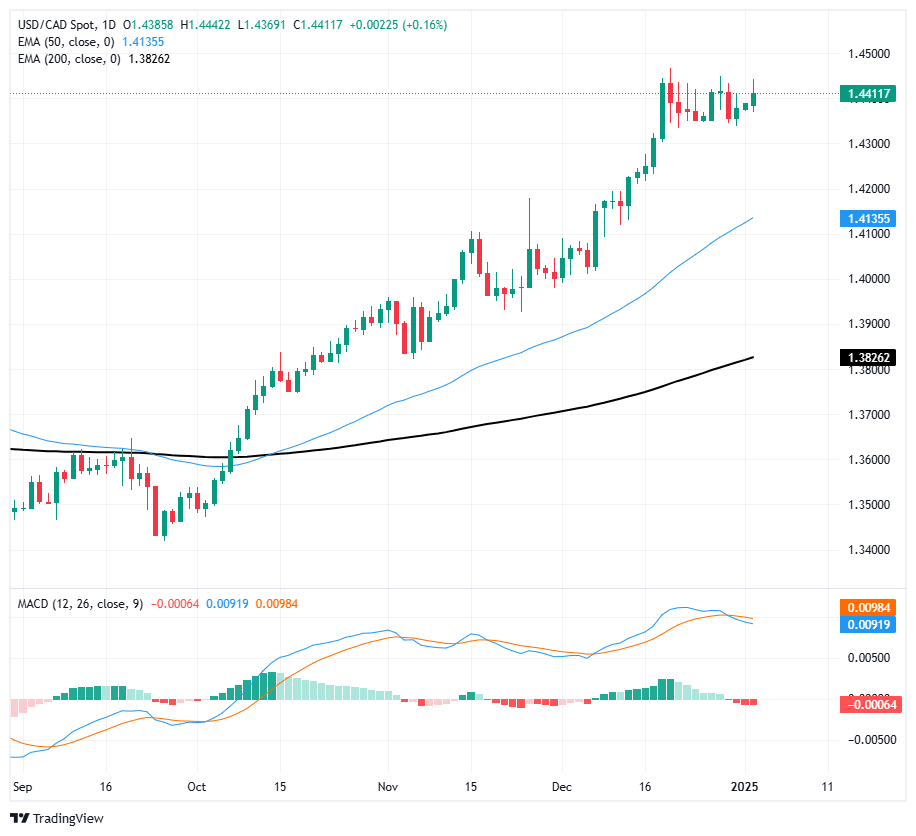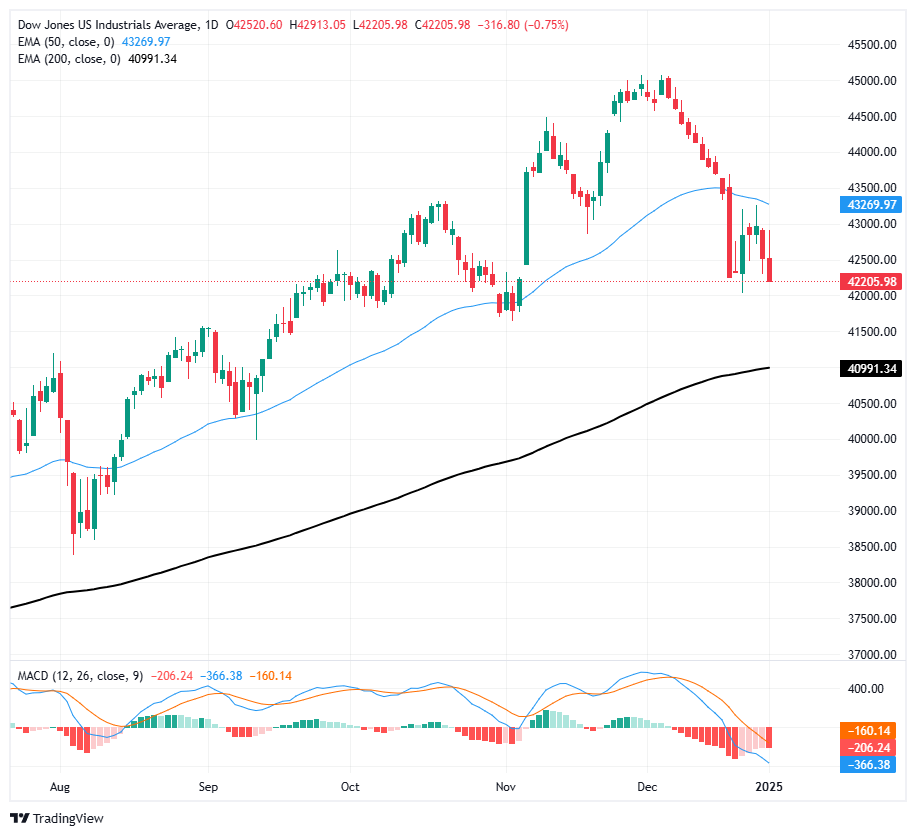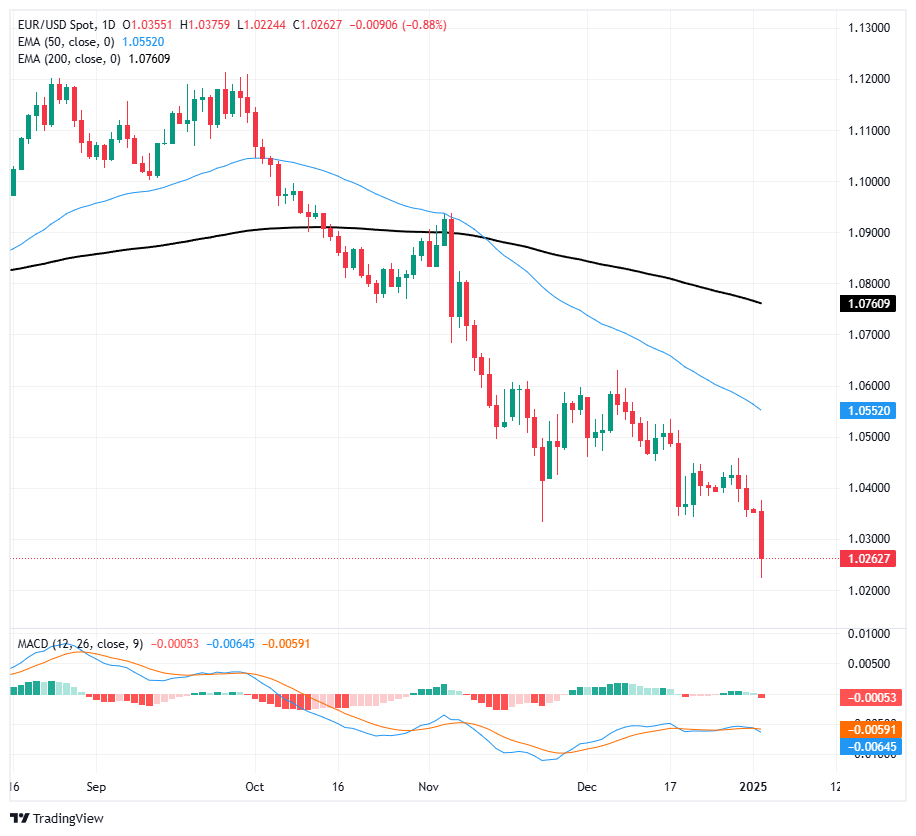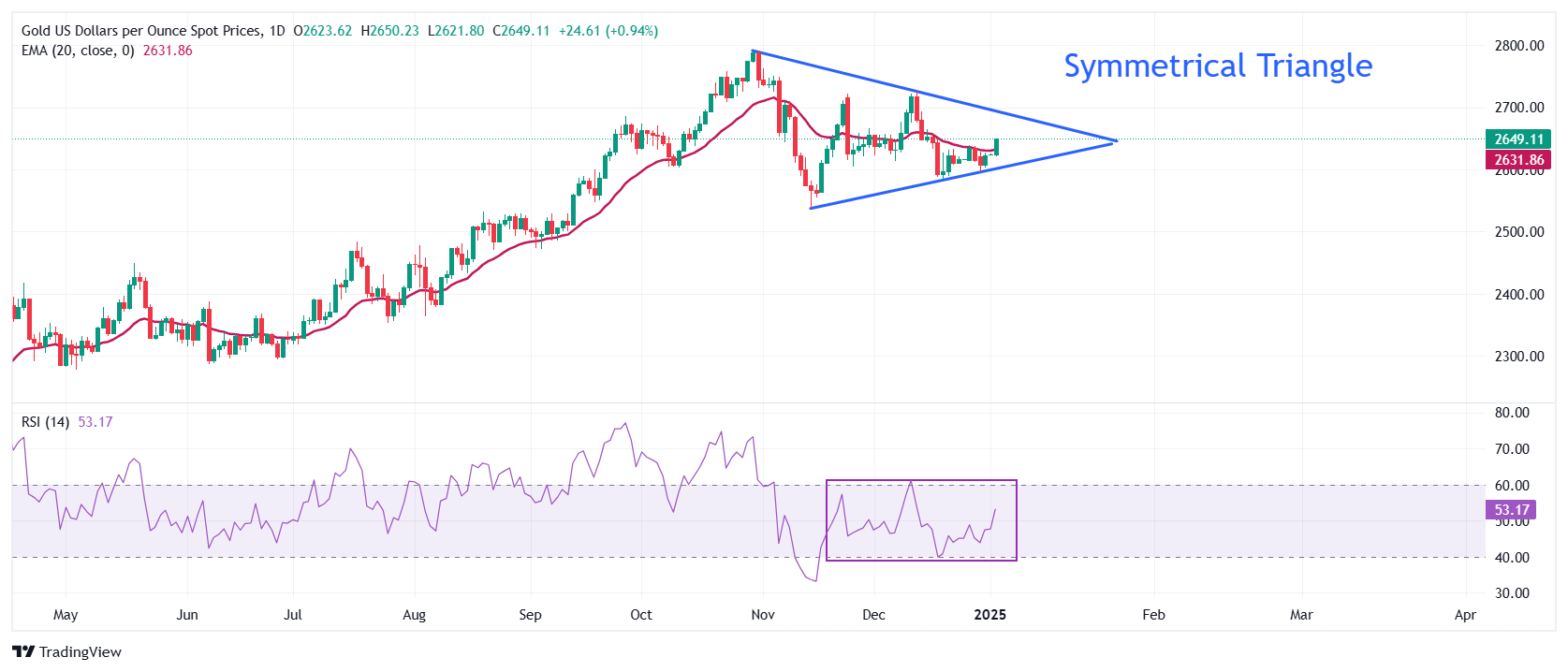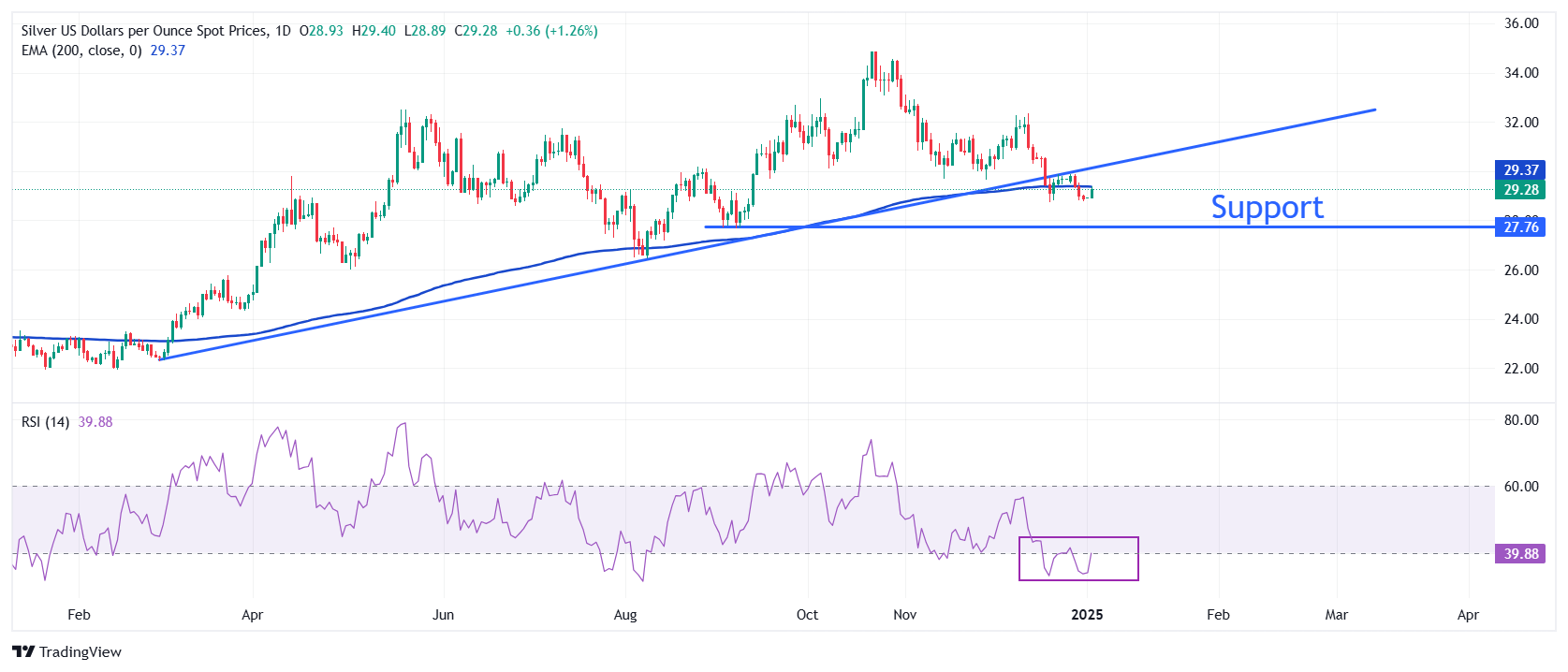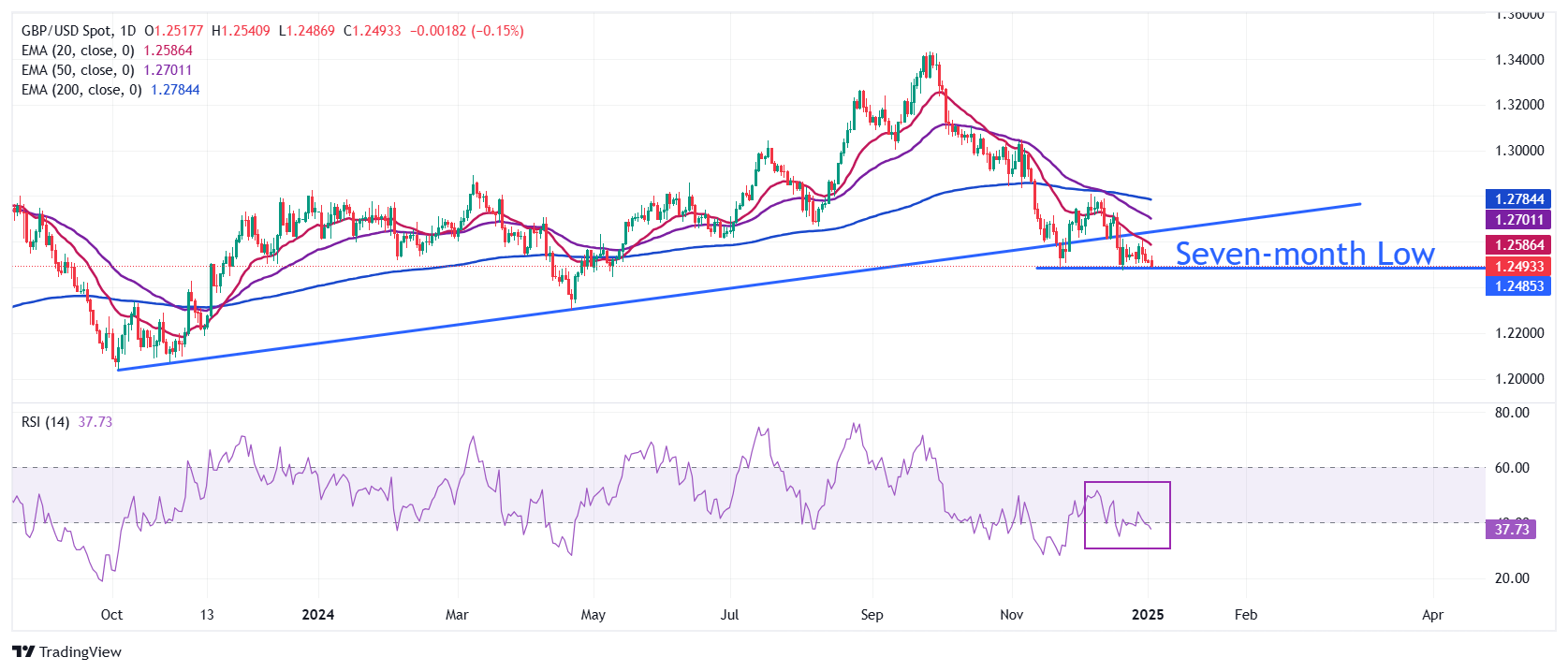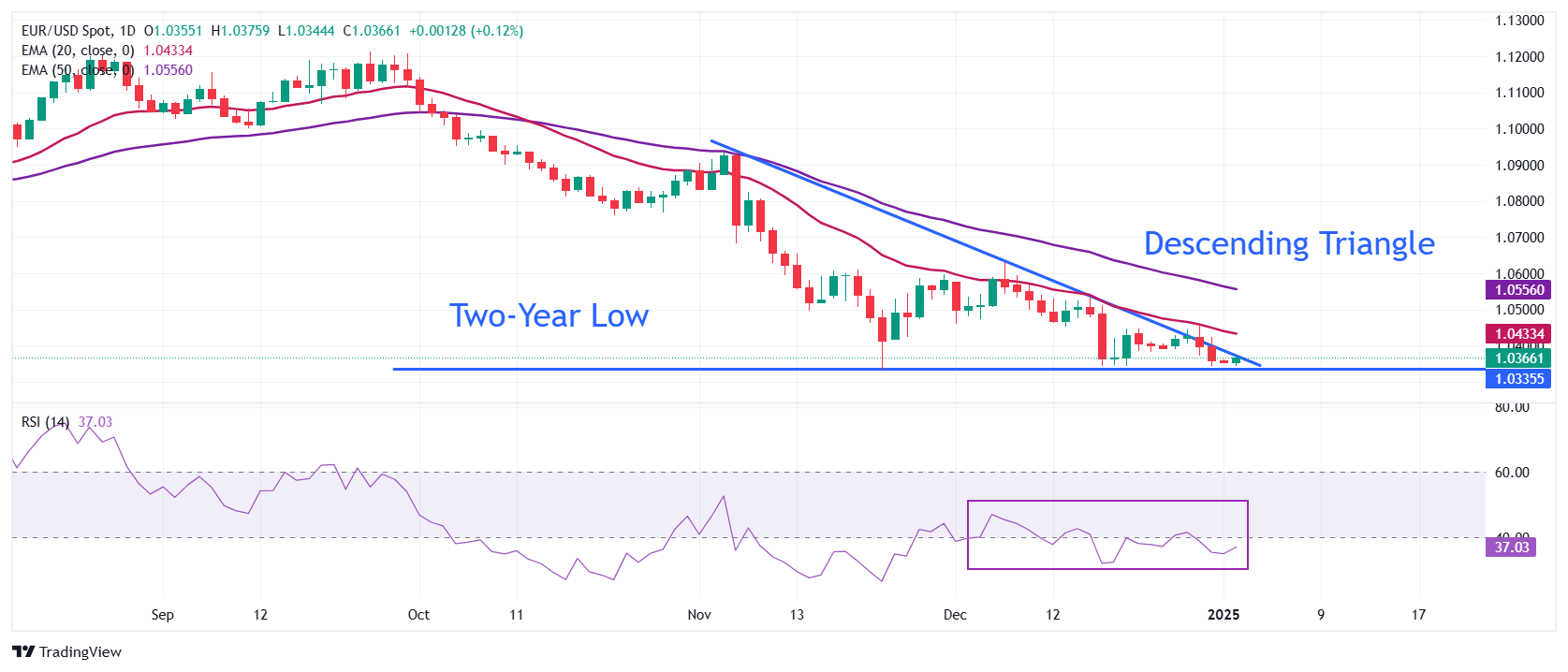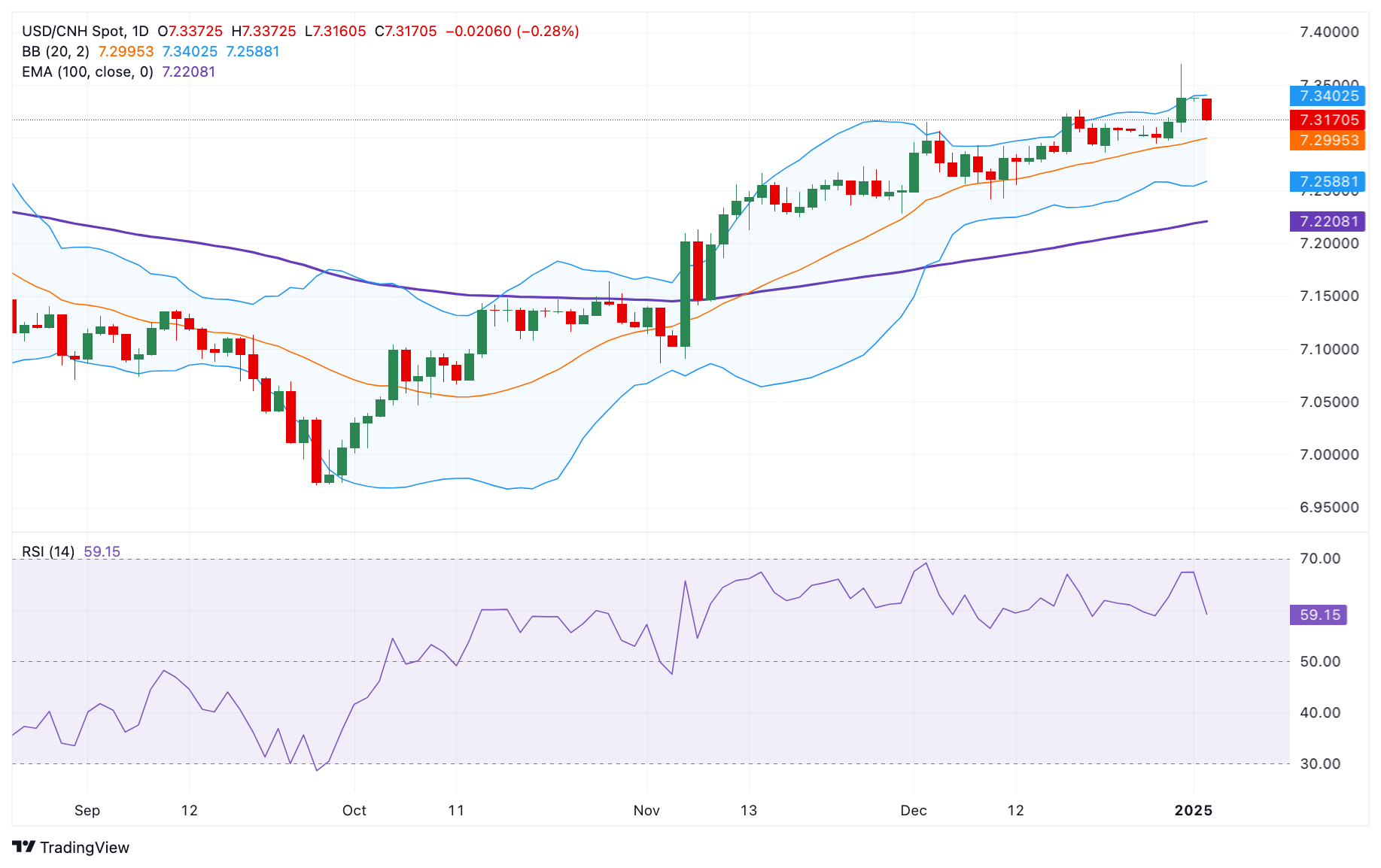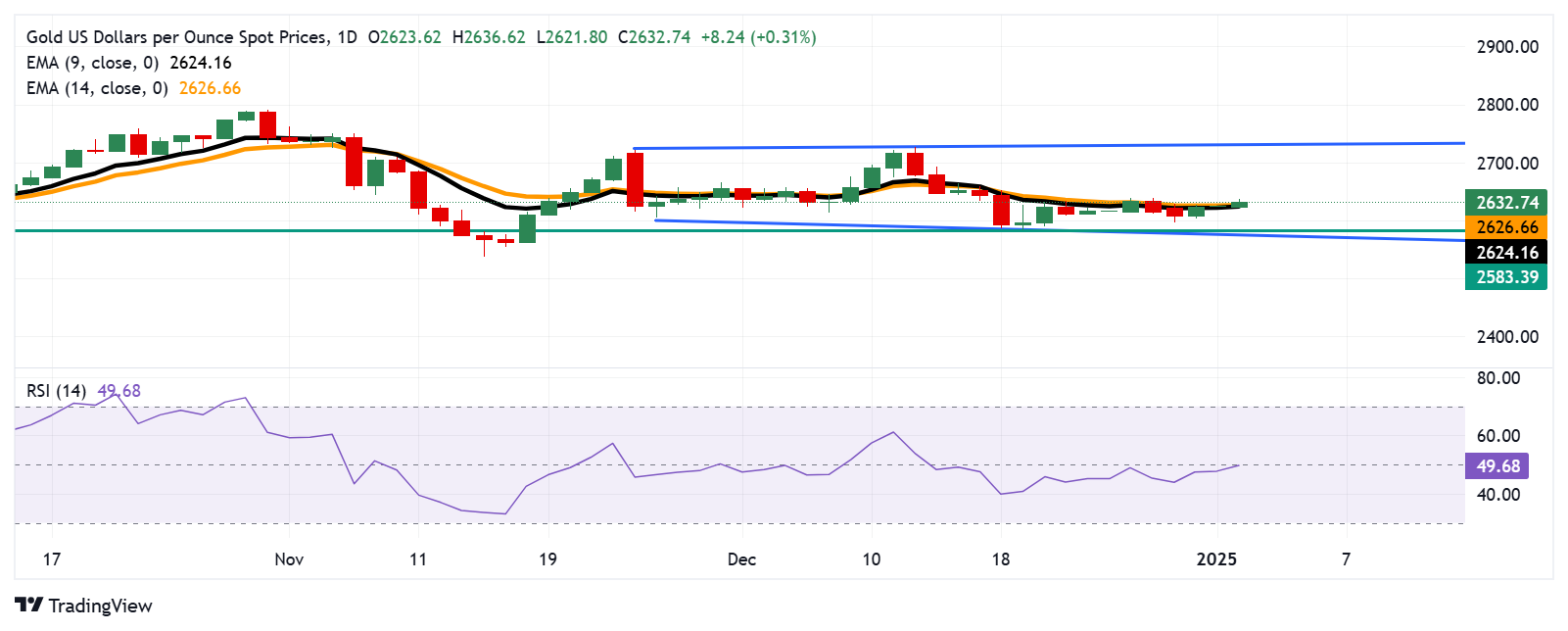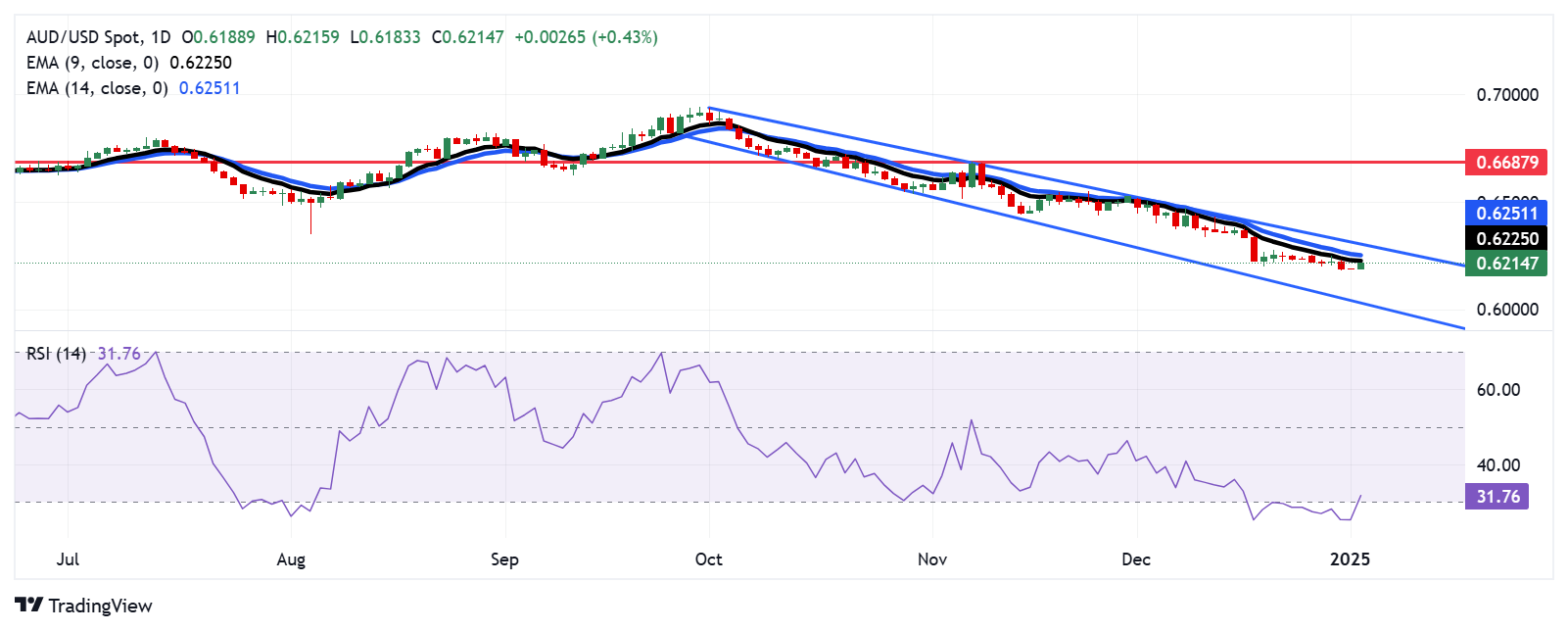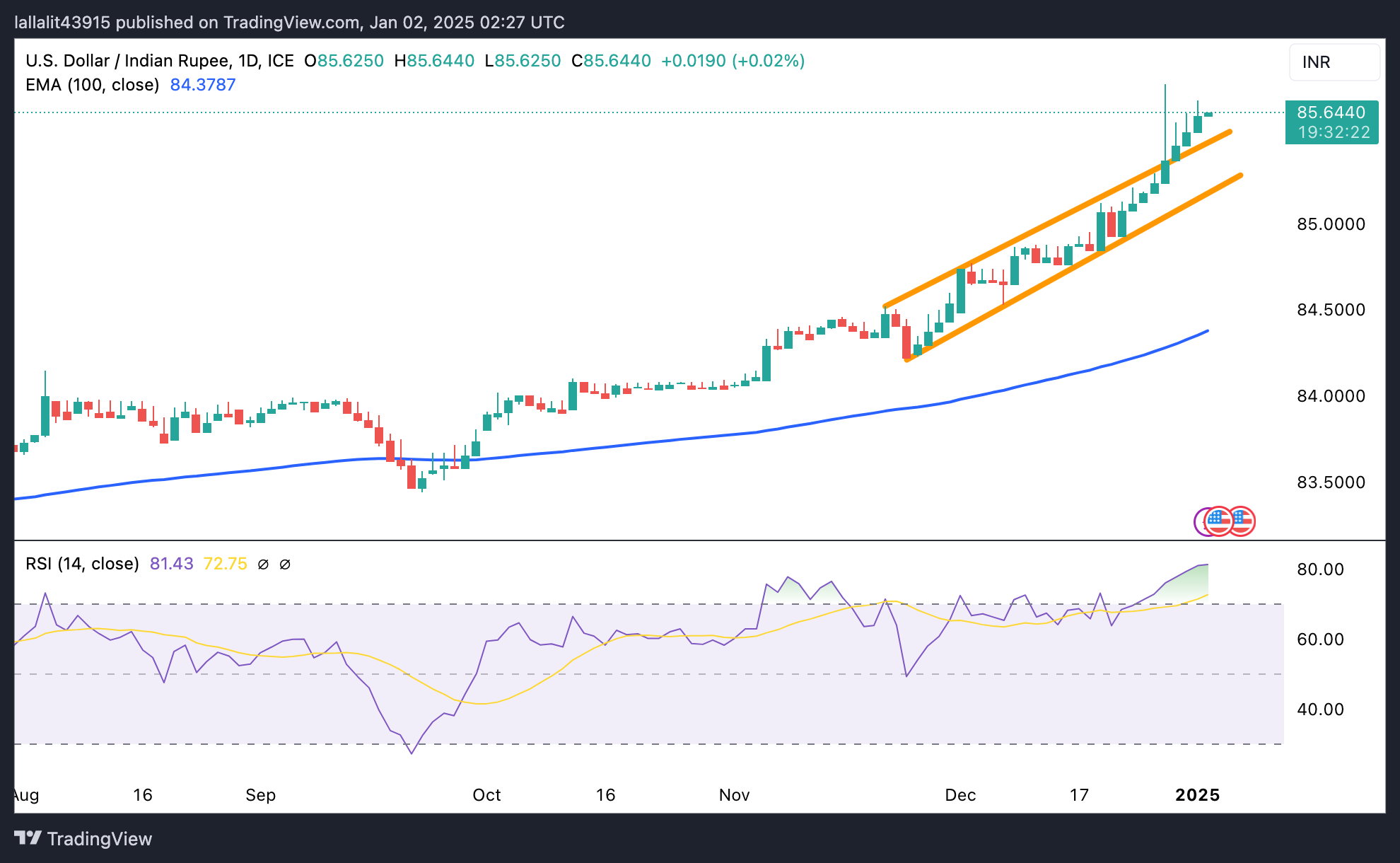- Analytics
- News and Tools
- Market News
CFD Markets News and Forecasts — 02-01-2025
- NZD/USD trades on a negative note near 0.5590 in Friday’s early Asian session.
- US weekly Initial Jobless Claims dropped to 211K vs. 222K expected.
- Trump's tariffs and concerns about recovery in China’s economy undermine the China-proxy Kiwi.
The NZD/USD pair remains on the defensive around 0.5590 during the early Asian session on Friday, pressured by the firmer Greenback. Investors brace for the release of the US December ISM Manufacturing Purchasing Managers Index (PMI), which is due later on Friday.
Meanwhile, the US Dollar Index (DXY), a measure of the US Dollar's value relative to its most significant trading partners' currencies, climbed to near 109.50, its strongest since November 2022.
The optimism around the US economy and the cautious stance of the US Federal Reserve (Fed) could underpin the USD in the near term. The US central bank indicated that it will be more cautious in cutting interest rates as inflation remains stubbornly above its 2% target and the economy remains robust.
Data released by the US Department of Labor (DOL) on Thursday showed that the Initial Jobless Claim for the week ending December 28 declined to 211K, compared to the previous week's print of 220K (revised from 219K). This reading came in below the market consensus of 222K.
Higher tariffs threatened by US President-elect Donald Trump and instability in the Chinese economy could weigh on the China-proxy New Zealand Dollar (NZD) as China is a major trading partner for New Zealand. The latest Chinese Caixin Manufacturing Purchasing Managers Index (PMI) showed that the country’s manufacturing sector grew in December but at a slower-than-expected pace. This reading raised concerns over a slowing economic recovery in the world's second-largest economy and might create a headwind for the Kiwi.
New Zealand Dollar FAQs
The New Zealand Dollar (NZD), also known as the Kiwi, is a well-known traded currency among investors. Its value is broadly determined by the health of the New Zealand economy and the country’s central bank policy. Still, there are some unique particularities that also can make NZD move. The performance of the Chinese economy tends to move the Kiwi because China is New Zealand’s biggest trading partner. Bad news for the Chinese economy likely means less New Zealand exports to the country, hitting the economy and thus its currency. Another factor moving NZD is dairy prices as the dairy industry is New Zealand’s main export. High dairy prices boost export income, contributing positively to the economy and thus to the NZD.
The Reserve Bank of New Zealand (RBNZ) aims to achieve and maintain an inflation rate between 1% and 3% over the medium term, with a focus to keep it near the 2% mid-point. To this end, the bank sets an appropriate level of interest rates. When inflation is too high, the RBNZ will increase interest rates to cool the economy, but the move will also make bond yields higher, increasing investors’ appeal to invest in the country and thus boosting NZD. On the contrary, lower interest rates tend to weaken NZD. The so-called rate differential, or how rates in New Zealand are or are expected to be compared to the ones set by the US Federal Reserve, can also play a key role in moving the NZD/USD pair.
Macroeconomic data releases in New Zealand are key to assess the state of the economy and can impact the New Zealand Dollar’s (NZD) valuation. A strong economy, based on high economic growth, low unemployment and high confidence is good for NZD. High economic growth attracts foreign investment and may encourage the Reserve Bank of New Zealand to increase interest rates, if this economic strength comes together with elevated inflation. Conversely, if economic data is weak, NZD is likely to depreciate.
The New Zealand Dollar (NZD) tends to strengthen during risk-on periods, or when investors perceive that broader market risks are low and are optimistic about growth. This tends to lead to a more favorable outlook for commodities and so-called ‘commodity currencies’ such as the Kiwi. Conversely, NZD tends to weaken at times of market turbulence or economic uncertainty as investors tend to sell higher-risk assets and flee to the more-stable safe havens.
© 2000-2025. All rights reserved.
This site is managed by Teletrade D.J. LLC 2351 LLC 2022 (Euro House, Richmond Hill Road, Kingstown, VC0100, St. Vincent and the Grenadines).
The information on this website is for informational purposes only and does not constitute any investment advice.
The company does not serve or provide services to customers who are residents of the US, Canada, Iran, The Democratic People's Republic of Korea, Yemen and FATF blacklisted countries.
Making transactions on financial markets with marginal financial instruments opens up wide possibilities and allows investors who are willing to take risks to earn high profits, carrying a potentially high risk of losses at the same time. Therefore you should responsibly approach the issue of choosing the appropriate investment strategy, taking the available resources into account, before starting trading.
Use of the information: full or partial use of materials from this website must always be referenced to TeleTrade as the source of information. Use of the materials on the Internet must be accompanied by a hyperlink to teletrade.org. Automatic import of materials and information from this website is prohibited.
Please contact our PR department if you have any questions or need assistance at pr@teletrade.global.
